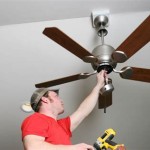Ceiling Fan Oil: What You Need to Know
Ceiling fans, with their ability to circulate air and provide a cooling breeze, are a beloved household appliance. But like any mechanical device, they require occasional maintenance to ensure smooth and quiet operation. One crucial aspect of maintaining your ceiling fan is oiling its motor. And while many people are familiar with the concept of oiling, there are specific considerations when it comes to ceiling fan oil.
This article will delve into the importance of using the right type of oil and discuss the benefits of using ceiling fan oil specifically designed for Italian models. It will also offer practical advice on how to apply the oil for optimal performance.
The Importance of Ceiling Fan Oil
Ceiling fans rely on a motor to spin their blades, and this motor contains bearings that require lubrication. Over time, these bearings can dry out, leading to friction and increased wear. This not only makes the fan run less smoothly but also increases the strain on the motor, potentially shortening its lifespan. Using ceiling fan oil helps address these issues.
The oil acts as a lubricant, reducing friction between the moving parts of the motor. This results in a quieter and more efficient fan operation. Additionally, it helps prevent corrosion and rust, which can occur due to exposure to dust and moisture.
Italian Ceiling Fans: Specific Requirements
Italian ceiling fans, known for their elegant designs and high craftsmanship, have certain features that might warrant the use of specialized oil. These features can include motor designs optimized for quiet operation and materials susceptible to certain types of oils. While general-purpose oil might seem like a convenient solution, using a ceiling fan oil specifically designed for Italian models can benefit your fan in a few key ways.
First, Italian-specific oil helps ensure optimal lubrication for the unique motor design of these fans. It is formulated to provide the correct viscosity and compatibility for these motors, ensuring smooth operation and extending the lifespan of your fan. Second, it is likely to be less aggressive than general-purpose oils, which can damage certain materials present in Italian ceiling fans. This helps maintain the intricate finishes and materials that make them a prized household feature.
How to Apply Ceiling Fan Oil
Applying ceiling fan oil is a simple procedure that can be done by most homeowners:
- Turn off the power to the ceiling fan at the circuit breaker. This is essential for safety and to prevent electric shock.
- Locate the oiling ports on the motor housing. These are typically small, round or rectangular holes. Refer to your fan's manual for exact locations if needed.
- Use a suitable oiling device such as a dedicated oiler or a syringe with a long, thin needle. Avoid using anything that might damage the motor.
- Apply a small amount of oil through each oiling port. Avoid overfilling the ports, as this can lead to leakage. A few drops are usually sufficient.
- Run the fan for a few minutes to allow the oil to distribute throughout the bearings. Turn the fan on at low speed for a short period to see if the noise level has improved.
- Wipe away any excess oil that may have leaked out. This helps prevent dust and dirt from accumulating around the motor.
Remember to check your fan's user manual for specific oil recommendations and instructions. Following the manufacturer's guidelines ensures optimal performance and longevity for your ceiling fan.

How To Oil A Ceiling Fan With Pictures Wikihow

How To Oil A Ceiling Fan With Pictures Wikihow

How To Oil A Ceiling Fan With Pictures Wikihow

How To Oil A Ceiling Fan With Pictures Wikihow

Hunter Italian Countryside 52 In Ceiling Fan With Led Light Kit And Pull Chain Cocoa

Ceiling Fan Wikipedia

Antique Vintage Original Old Marelli Ceiling Fan Italy 3 Blade Wings Propeller

Simple Olive Oil Bread Dip
Kirkland Signature Extra Virgin Italian Olive Oil 2 L Costco

T Offers On Spal 30101522 Puller Fan 12 Medium Profile
Related Posts








